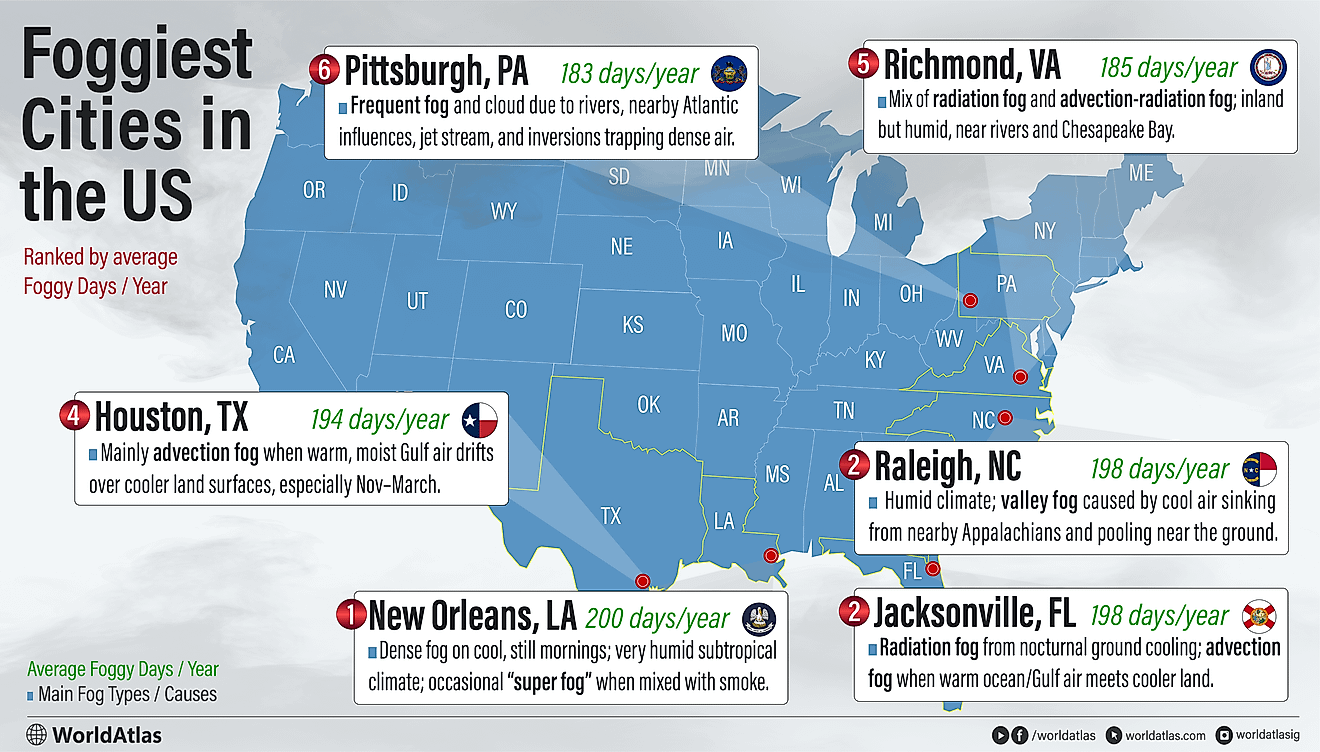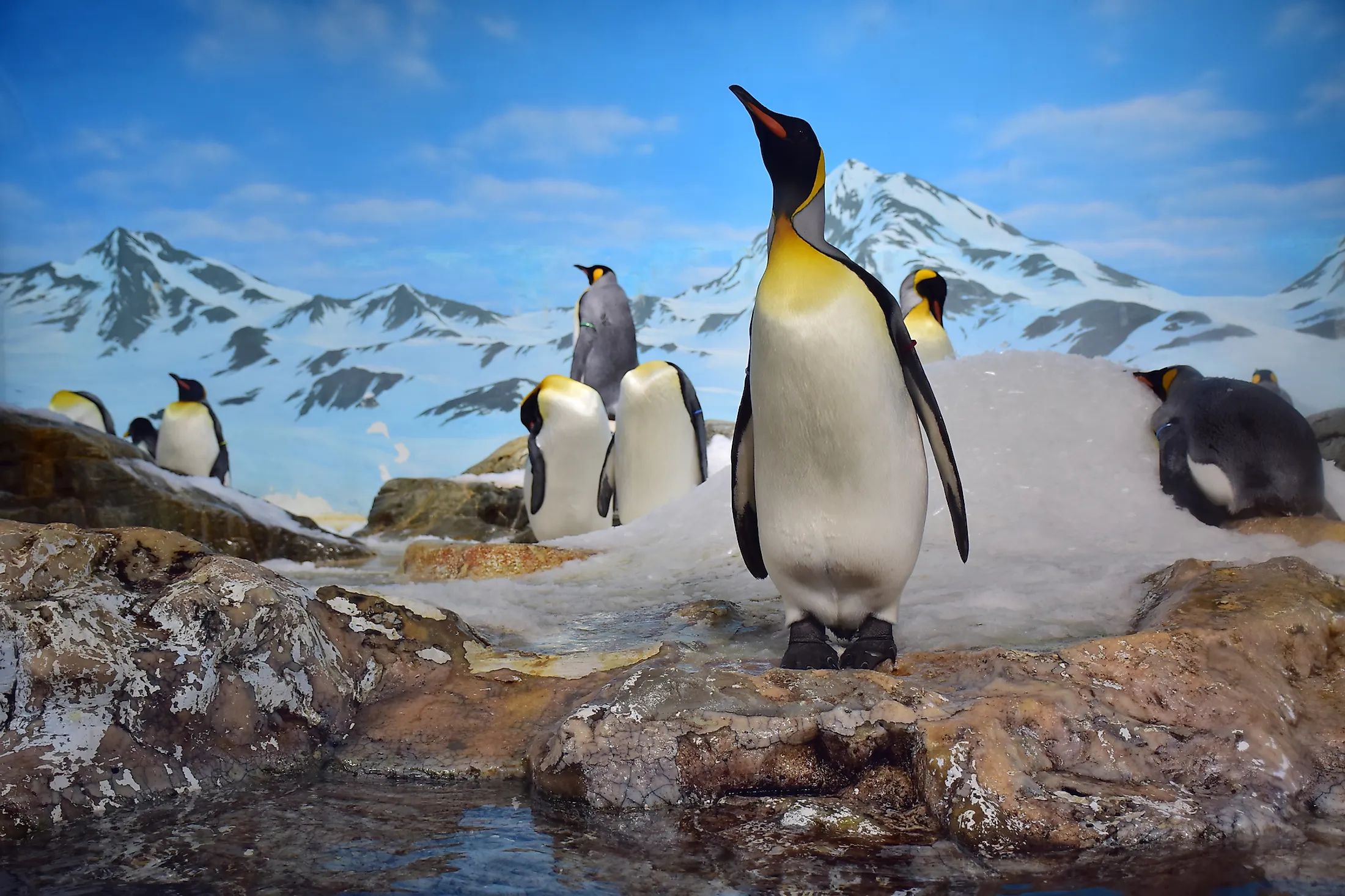
10 Animals That Live In Antarctica
The freezing deep south of Antarctica is home to many remarkable animals, including numerous record-breakers. These are ten notable species that live and thrive in Antarctica.
Adélie Penguin
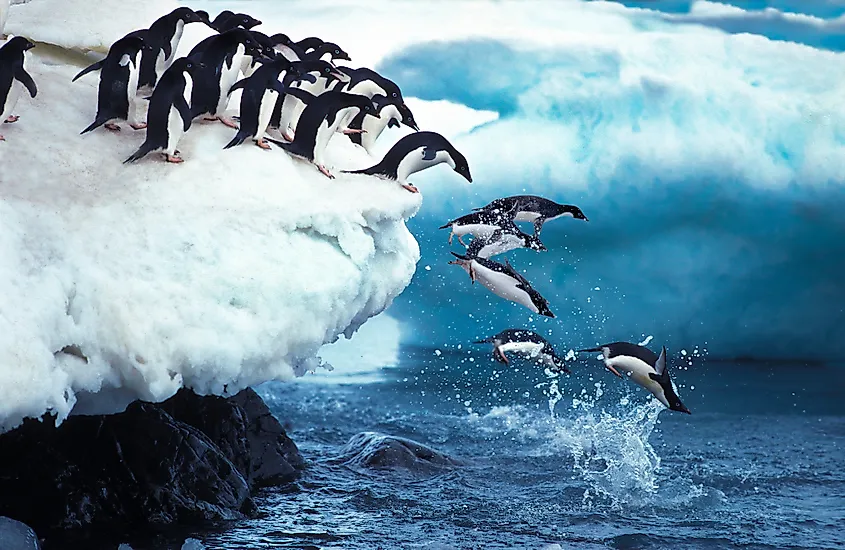
Adélie Penguins are part of the brush-tailed penguin family along with the Chinstrap Penguins, who also live in Antarctica. The cute birds are the continent's smallest penguin species, with distinctive tuxedo-like black and white feathering, sleek bodies, and a white ring around the eyes. Adélie Penguins live and breed solely in the polar region, just like their distant-family giants, the Emperor Penguins. They eat mostly krill, along with some fish and squid. The changes in the oceanic environment and the Antarctic Peninsula's warming have caused krill and, consequently, the Adélie Penguin populations to drop by 70 to 90% since 1982. They still thrive along the rocky outcrops across the Antarctic coastline, where one can spot an increasing number of them.
The birds lay only two eggs a year that hatch in the early summer of December or January on the polar circle. They construct nests out of small stones to shelter and incubate the eggs and offspring. One-month-old chickadees get out from under the wing and gather in rowdy groups of friends called "crèches." In-between two and three months of age, they are ready for life at sea upon gaining adult feathers. The birds are known to engage in a loveable courting ritual of offering pebbles as a sign of affection to their counterparts, while the males also have a sneaky habit of stealing pebbles.
Blue Whale
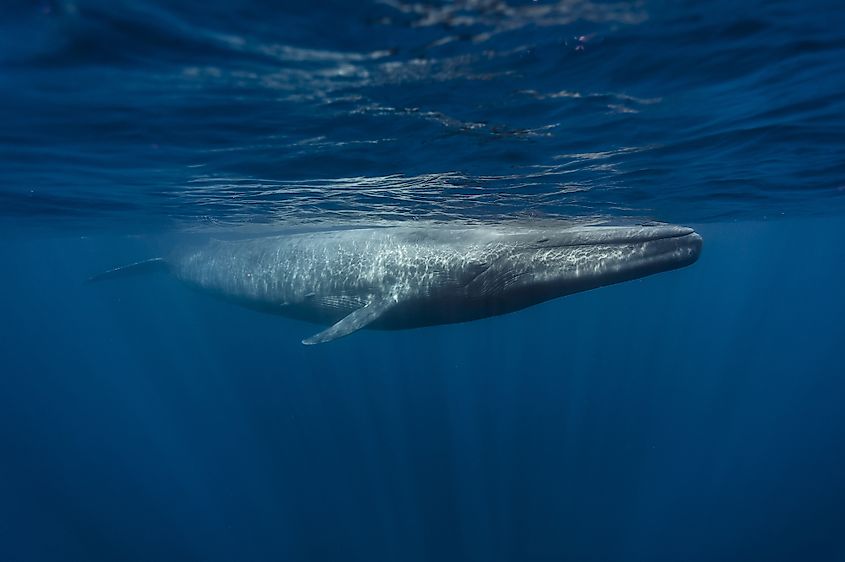
Blue Whale is the largest species on the continent and in the world. They can be found in other parts of the planet, having luckily scaled extinction by a hair-width in the 20th-century from aggressive whaling practices. Their numbers are slowly recovering, but the species is still under pressure. It is also rare to sight the impressive giants, whose cry, louder than a jet engine, can be heard from miles away. They come at about 30 meters in length and weigh around 200 tonnes, with hearts the size of a small car.
In the early 20th-century, their population comprised over 200,000 worldwide, while hitting its lowest in 1966 with only 400 in Antarctica. Today there are some 2,000 perusing the Antarctic Ocean, with similar populations in both the Pacific and Indian Oceans. The nutrient-rich Antarctic waters during summer nourish the giants with ample krill, after which they migrate for a diversified catch in the warmer feeding waters of the equator. One can sight a Blue Whale during summer while spreading the waters on a cruise with the wonderful Antarctica scape as the backdrop.
Emperor Penguin
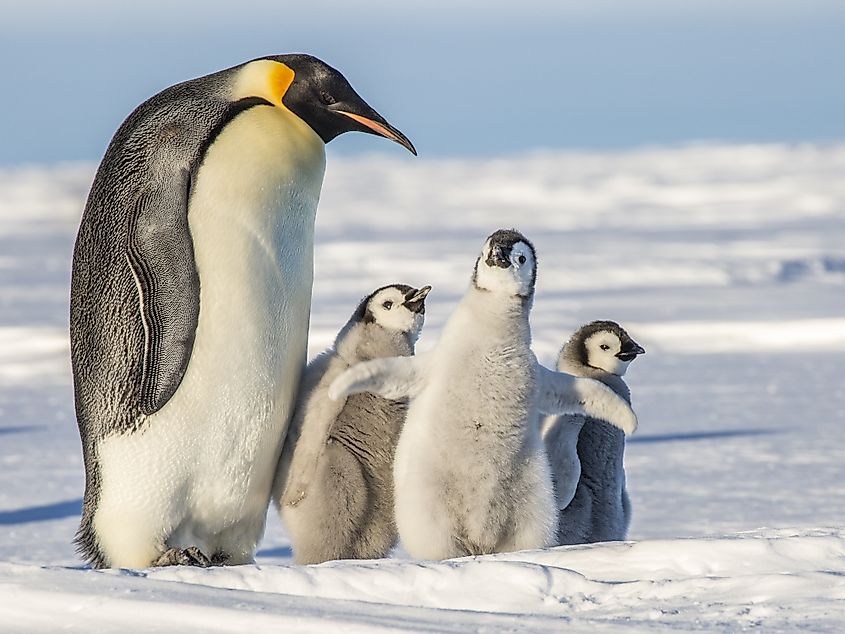
Emperor penguins are the largest penguin species on Earth, with an average weight of 30 kg (66 pounds) and up to 45 kilograms (100 pounds). They are, on average, 1.15m (3.8 feet) tall, live and breed exclusively in Antarctica, and comprise a population of about 595,000 around the world. The largest land animal in Antarctica thrives in the long dark winter night, rearing the young and breeding in November. The aptly-named penguins are one of the most dignified animals on the planet, sporting "tuxedo wear" in which they pull off being gawky and awkward as other penguins, but in an upright and regal way.
The white-breasted animals feature a large white face patch and yellow ear patches, with a seamless transition from one color to the next, while the King's orange ear patches are interrupted by a band of black feathers. Their cousins, the King Penguins, who are almost as large, are sub-Antarctic species based on islands dotted around the continent, while the "emperors" live only in the deep south. One can sight them huddled together in large groups to keep warm in the coldest part of Antarctica, the Northern Antarctic Peninsula.
Killer Whales (Orcas)
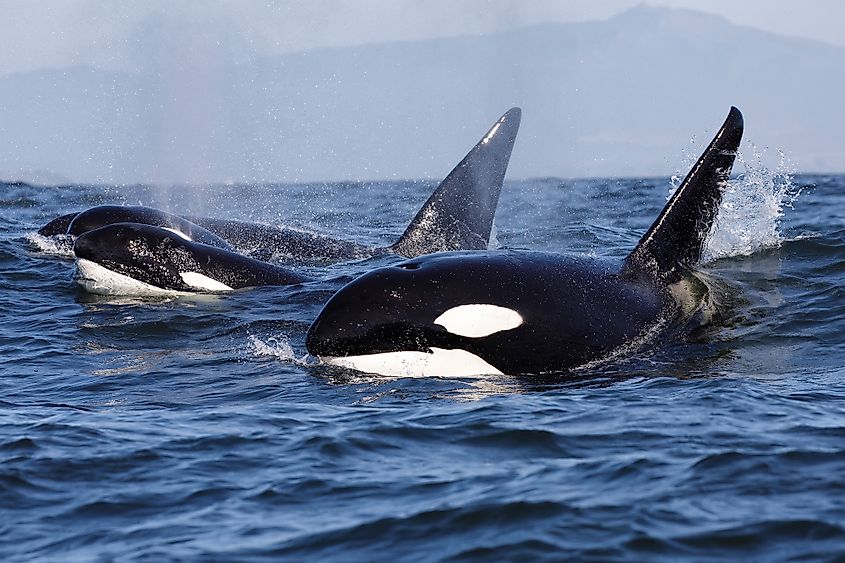
Killer Whales are the biggest species of dolphins on the planet that are also known as "Orcas." Their world population comprises some 100,000 individuals spread through all of the oceans, with most concentrated in Antarctica. Killer Whales come in four distinct types, according to NOAA, based on which "flavor" of prey they prefer in their diet. Type A, B, C, and D are all present in Antarctica.
They can reach 9.2 m (30 ft.) in length while weighing up to nearly 10,000 kg (22,000 pounds). One can spot a Killer Whale in the wild during summertime in the southernmost polar continent of Antarctica. Cruises in and around the Antarctic Peninsula and the Ross Sea offer the best chance to sight-see an Orca. It comprises a truly evoking experience full of emotions with the giants in their natural habitat against the backdrop of crashing waves and icebergs in the Antarctic Ocean.
King Penguin
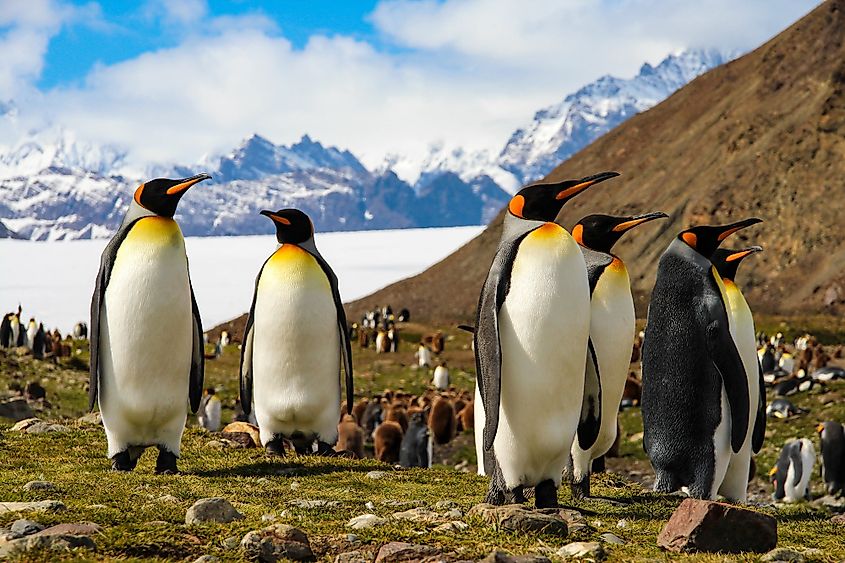
King Penguins follow the Emperor Penguins as the second largest of their family on Earth. There are about 4 million Aptenodytes patagonicus in the world today. It is most likely to spot these comically-attractive creatures with a fiery golden plumage around their heads in South Georgia Island and the Falkland Islands. There are King Penguins in zoos worldwide, and they are also the most commonly represented penguin species in cartoons.
The males incubate the eggs using a special warming pouch that covers up their feet where the young shall bore. They regulate their body temperature by puffing out the colorful feathers to trap air for insulation and fanning out the feathers to let the air escape, which cools their bodies when it gets too hot. It is best to spot King Penguins in the wild from December to February in Antarctica, although there has been a surprising sighting in Tasmania, some 1,500 from their natural habitat.
Leopard Seal
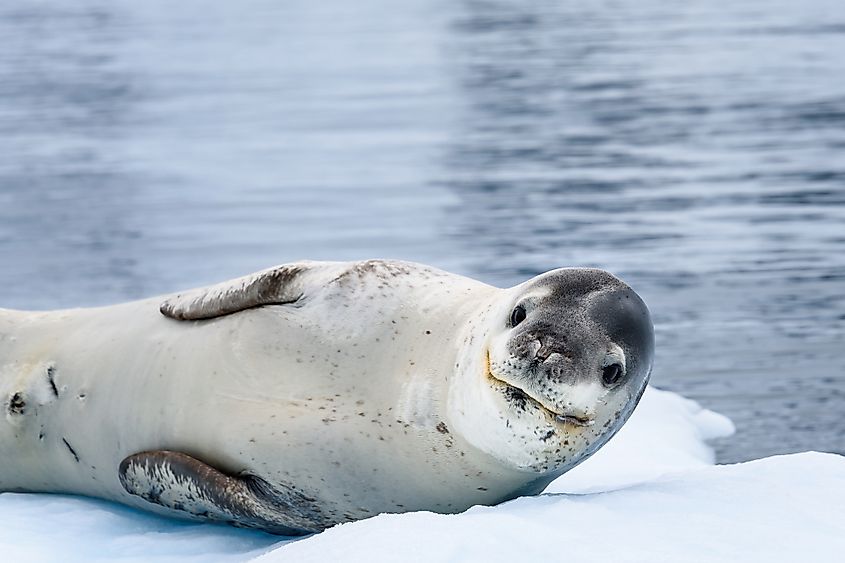
The Hydrurga leptonyx are solitary creatures that are the second-largest seal species on the continent. They grow, on average, to be 2.4–3.5 m (7.9–11.5 feet) tall and weigh between 200 – 600kg (440 – 1,320 pounds). The females grow larger, up to 3 meters (10 feet), with weights reaching up to 590kg (1300lb). They are a "least concern species" on the endangered list among other seal species. One can spot these adaptable creatures on Antarctica and Sub-Antarctic Islands coasts, while they were also sighted on the beaches around Tasmania in 2017.
They are sleek and stealthy with almost-serpent bodies that move quickly through the water at speeds of up to 40km/h (25mph). Although Leopard Seals are avid hunters, they are not picky eaters and filter-feed on various fish, squid, and small crustaceans with specially-grooved teeth. The carnivores are highly effective predators that supplement marine mammals, including penguins and small seals, into their broad diet, clamping on prey with their powerful jaws.
Snow Petrel
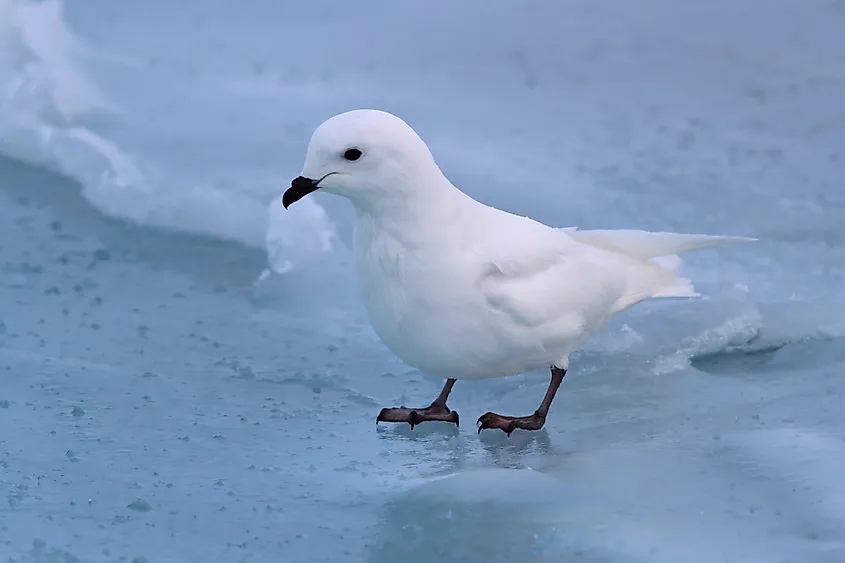
Snow Petrels are tiny, 11 to 16 inches-tall dwellers in Antarctica and one of the most beautiful ones. The aptly-named birds boast snow-white feathering that makes one think of "purity." Their elongated bodies aid in sheltering them from predators and cold by nesting in crevices. The black eyes and beaks stand out in the barren Antarctica snowy ground. One can see the bird near open water, packing ice, or continuous ice along the coast.
The long-lived species of Pagodroma nivea features a large and healthy population of 4 million in the wild. Snow Petrels lay and tend to their eggs from October to November, with chicks born six weeks after. The small, agile, and mighty birds are excellent at surviving extreme conditions and the wind chill while living up to 20 years of age. Their oily feathers are waterproof to dive for prey of fish, squid, krill, seal placenta, and animal carcasses. The water droplets slip right-off for flight upon resurfacing, while their webbed feet help them swim and walk on ice.
Southern Elephant Seal
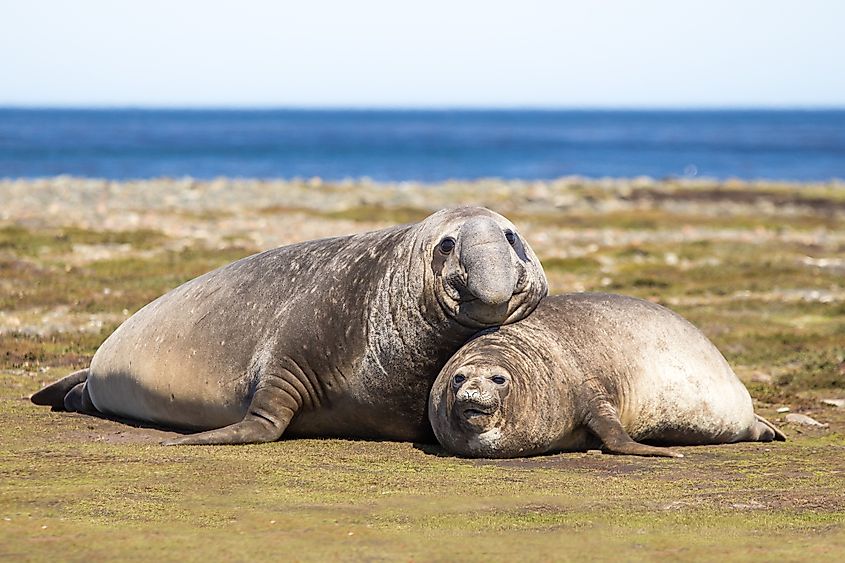
Mirounga leonina are giants of the Antarctic seals, with females coming at an average of 2.6 to 3 m (8.5 to 9.8 feet) in length and males at 4.2 to 5.8 m (14 to 19 feet). The females also weigh 400 to 900 kg (880 to 1,980 pounds) and males 2,200 to 4,000 kg (4,900 to 8,800 pounds), while the species lives on average 21 years in the wild. They are the largest mammals on Earth apart from whales and can be found widely across the Southern Ocean. They were once overhunted for the rich blubbers' oil to the point of near extinction. Fortunately, their numbers have bounced back up, thanks to strong protection, to a status of least concern on the IUCN Red.
The aptly-named male counterparts boast long, trunk-like snouts. Southern Elephant Seals breed in densely packed colonies on the sub-Antarctic islands. Their uncensored mating habits involve the dominant males surrounding themselves with a harem of 40 to 50 females and wait on other male interlopers. They then fiercely "defend" the females in hopes of impressing the most stoic lady. One can witness these battles for supremacy in aggressive clashes along South Georgia's beaches during the breeding season. "Wallows" of Elephant Seals also gather in muddy pits where they cover themselves in cool, wet sand using their small flippers.
Wandering Albatross
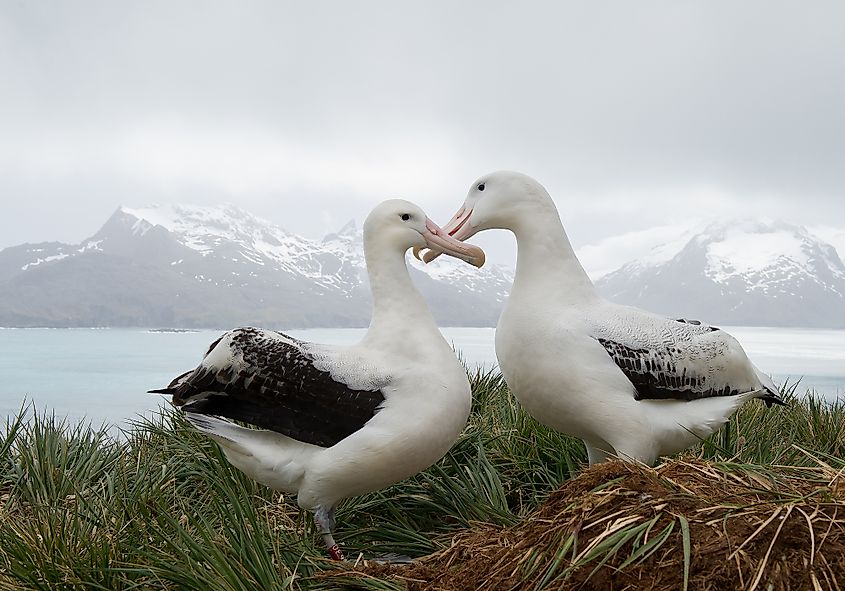
Wandering Albatross is another record-setting animal that inhabits the Antarctic. It is an impressive bird with the longest wingspan on the planet. One will never forget the sight of a soaring Wandering Albatross hovering over with a wingspan of 3.1-3.5 meters. They easily stay airborne without using much energy and travel great distances, especially with the help of the favorable Antarctic's strong winds.
One can sight the mighty bird in the sub-Antarctic regions, such as over the exposed ridges on Prince Edward Island and South Georgia, especially right before mid-November. Wandering Albatrosses mate for life, but have recently faced high mortality rates from long-line fishing hooks. Slowed breeding results in more deaths than hatches, and consequently dwindling numbers of the species.
Weddell Seal
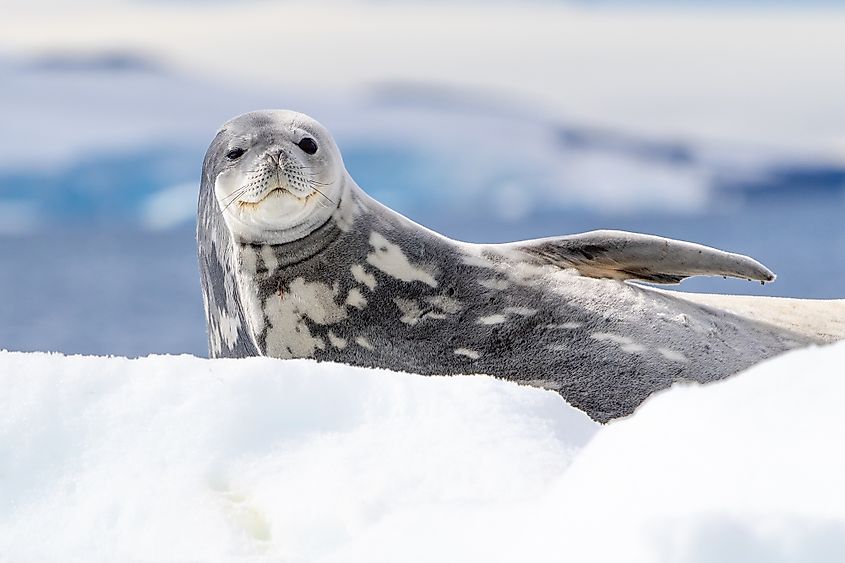
Weddell Seals are the most southerly breeding mammal on Earth that like to stay within 50-100 km (31-62 miles) of their home throughout life. They live in haul-outs on the fast-ice surrounding Antarctica, where they rest, molt, and pup. The sea is at a hand's reach for summertime feeding around the ice on small fish, crustaceans, and small marine life, including penguins. Their remarkable "sci-fi spaceship" call is an instantly recognizable cacophony of alien chirps and chimes.
When the real cold strikes and the seawaters congeal, Weddell Seals use their sharp canines and incisors to carve holes in the ice for continuous access to dive into the bountiful waters. The animals dive up to 700 meters below the water's surface and professionally navigate for up to 80 minutes. They resurface through the same small "breathing holes," even in the 24/7 darkness of the winter months. The smart creatures also take preventative measures to keep the holes from freezing over, wearing out their teeth over time. This is believed to be the main cause of the species' high mortality rate.
Most of these animals can be sighted during summertime in Antarctica. Needless to say, it is best to visit outside of the dead-cold, dark, and long winter "night" to see the land animals like penguins and seals. Various cruises are available through the scenically-boundless Antarctic Ocean for the water creatures and other birds.











